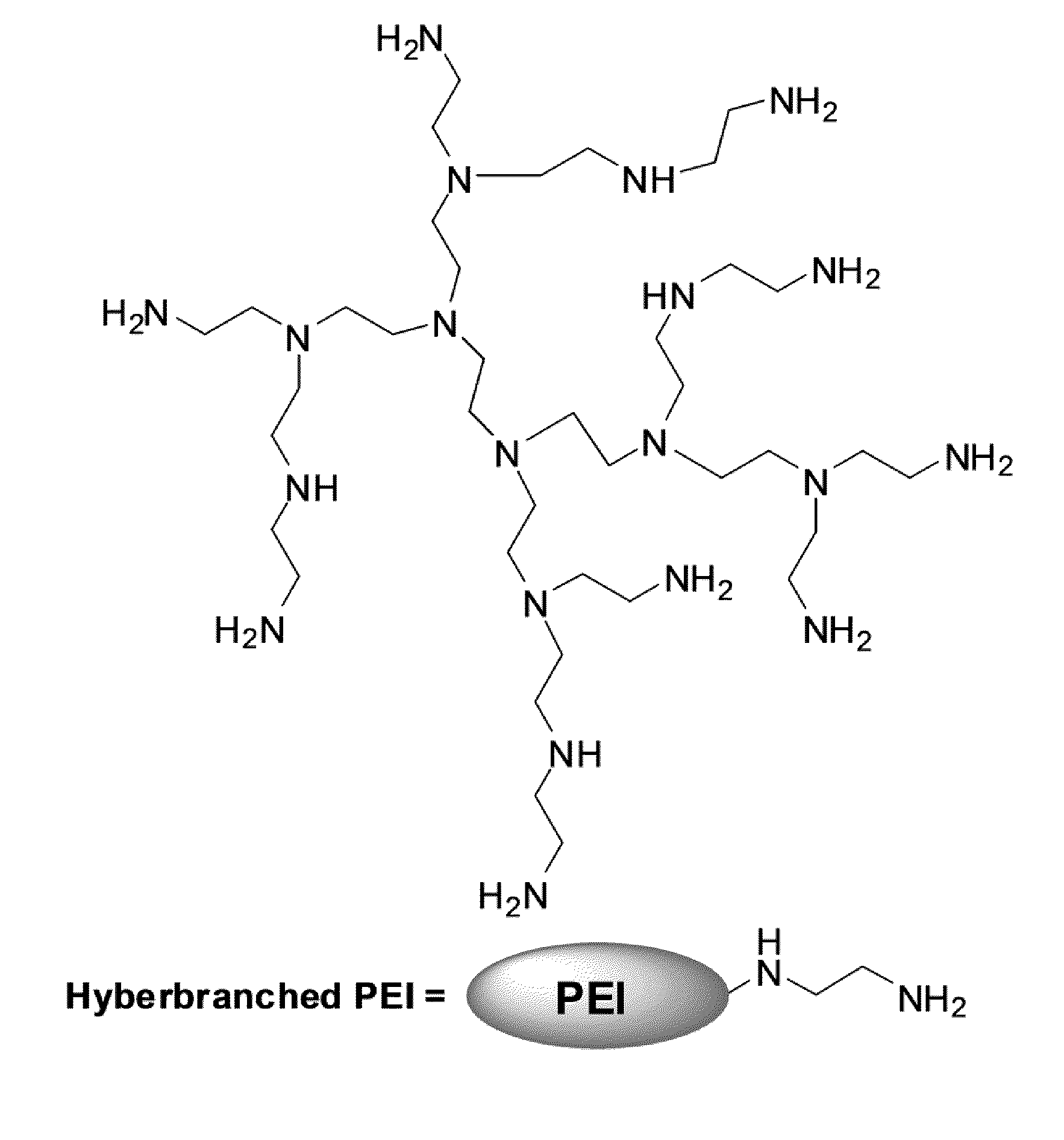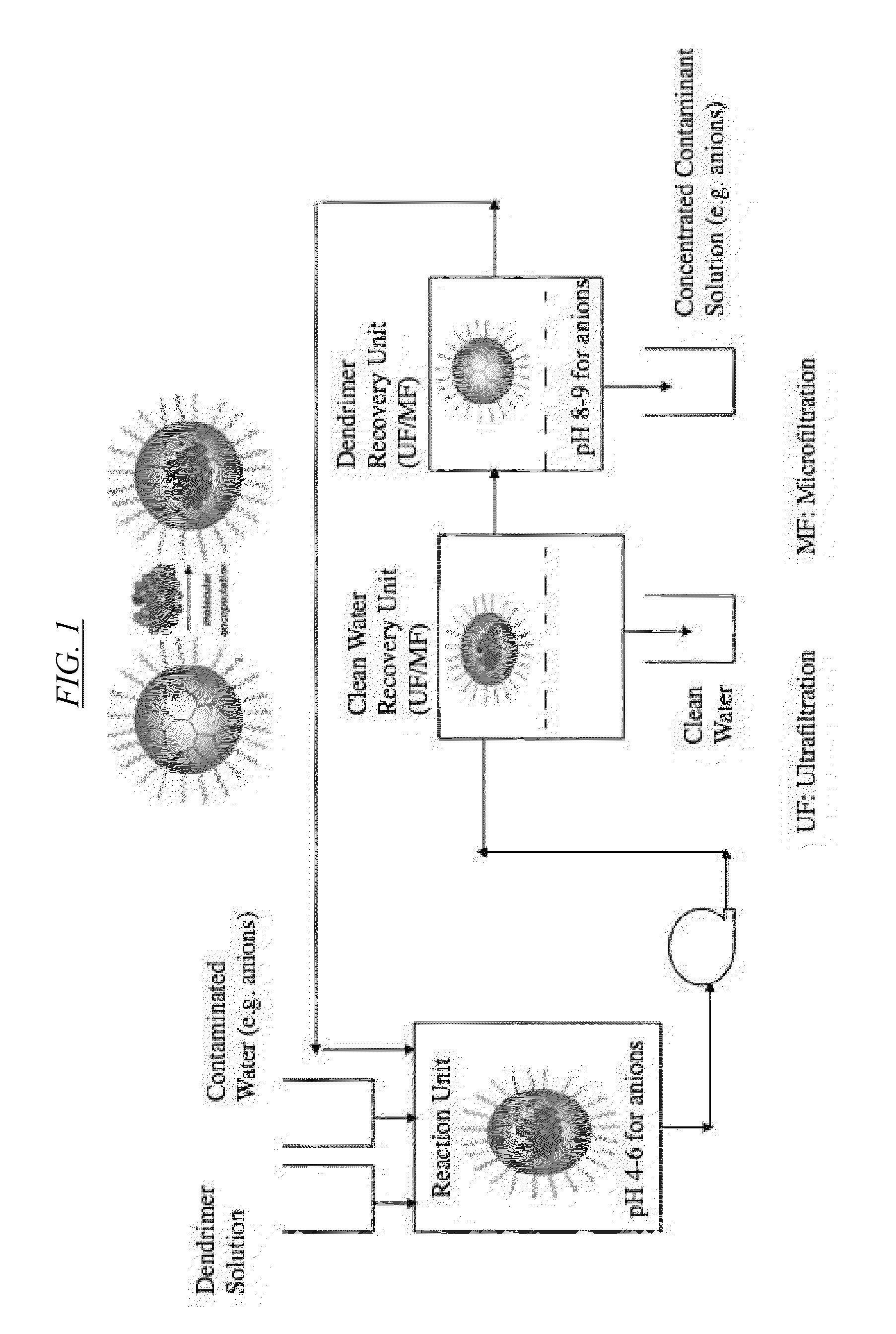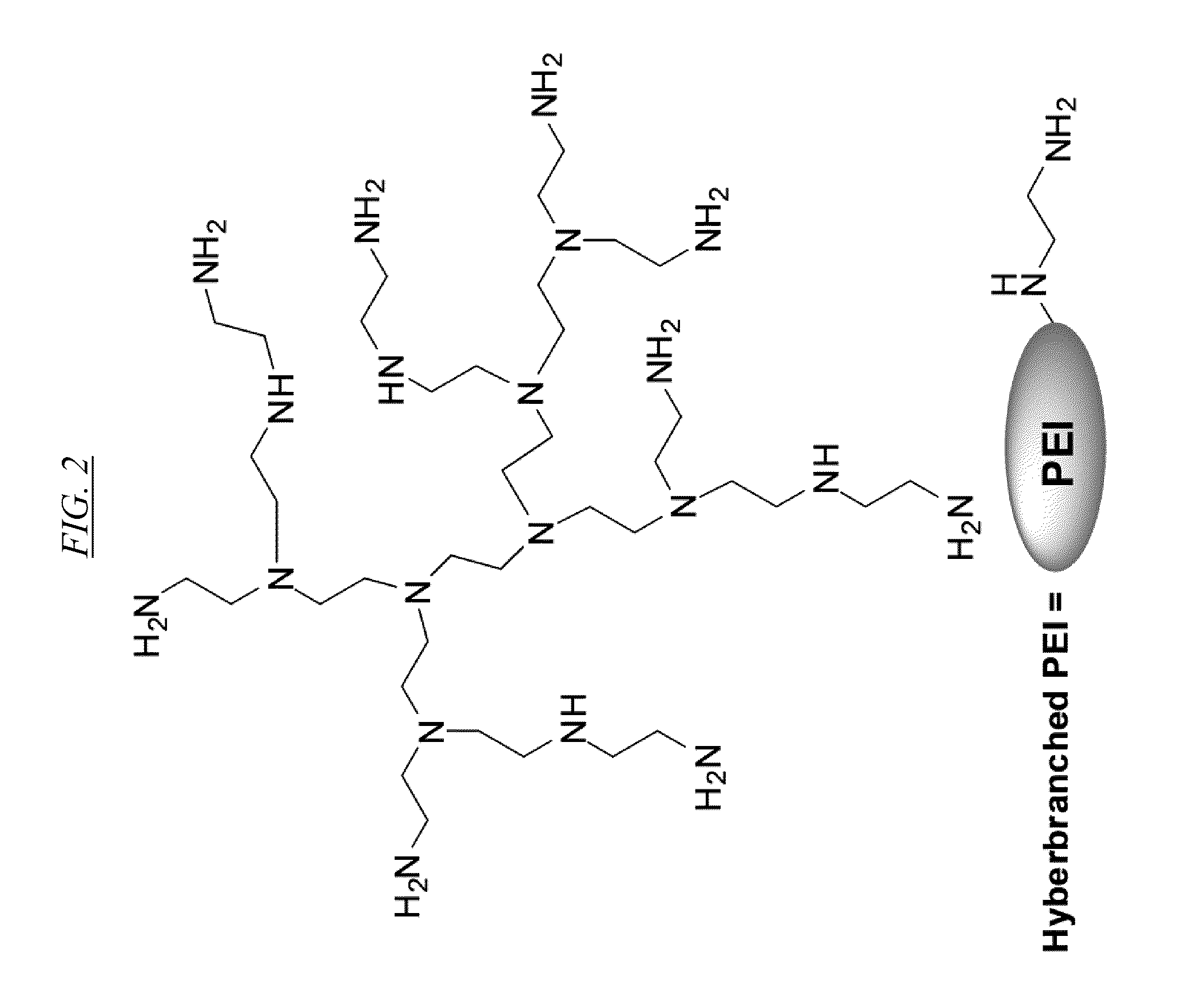Extraction Of Anions From Solutions And Mixtures Using Hyperbranched Macromolecules
- Summary
- Abstract
- Description
- Claims
- Application Information
AI Technical Summary
Benefits of technology
Problems solved by technology
Method used
Image
Examples
example 1
[0091]The following example illustrates various embodiments of hyperbranched macromolecules and their binding properties and other properties. This example is illustrative of the disclosed embodiments, but does not limit them in any way:
[0092]The Examples herein describe various embodiments of the synthesis and characterization of a broad range of anion-selective branched macromolecules via functionalization of the primary and secondary amine groups of PEI hyperbranched macromolecules (Base Polymer 1 with Mw=750 KDalton and Base Polymer 2 with Mw=25 KDalton). In each of the illustrative examples described herein, the primary and secondary amine groups of hyperbranched PEI are converted to tertiary amines. However, in alternative embodiments, the primary amines may be converted to secondary amines or tertiary amines, and the secondary amines may or may not be converted to tertiary amines. It is known in the art that tertiary amines have acidity constants ranging from about pKa=6.0-7....
example ii
[0099]Example embodiments are now presented as various functionalized dendritic macromolecules that may be used in the selective filtration or separation of anions. This example is illustrative of the disclosed embodiments, but does not limit them in any way:
[0100]For purposes of this example, purified chemicals for use in these inventions may be obtained by means known in the art, preferably through a supplier such as Aldrich and BASF, and preferably without further purification, unless the chemical is insufficiently pure under standards known in the art. Preferably, 3-Dimethylamino-2,2-dimethylpropionaldehyde and 3-Diethylamino-2,2-dimethylpropionaldehyde may be purchased from Frinton Laboratories, Inc and Pfaltz & Bauer, Inc., respectively. Compounds may be characterized using various chemical analysis instruments known in the art, preferably 1H NMR (400 MHz) and 13C NMR (75 MHz) on a Bruker AVQ 400. High-resolution mass spectra and elemental analysis (CHN) are also preferably pe...
example iii
[0136]An example of the use of hyperbranched macromolecules in cross-flow filtration is described. In this particular example, PEI is bound to nitrate and sulfate, and the PEI is recovered by cross-flow filtration. This example is illustrative of the disclosed embodiments, but does not limit them in any way. In particular, hyperbranched molecules other than PEI (such as those described in this disclosure) may be used, and other anions or contaminants may be used:
[0137]Materials: Reagent-grade sodium sulfate (Na2SO4) and Potassium nitrate (KNO3) from Sigma-Aldrich may be used, respectively as sources of SO4−2, and NO3−1. Polyethyleneimine (PEI), the hyperbranched polymer may be used as received from DSM, Germany. Table 13 gives the selected properties of PEI which would be used in this example.
TABLE 13Selected properties ofhyperbranched polyethyleneimine.PropertiesMolecular weight (g / mol)25000Polydispersity index2.5Degree of branching (%)65Degree of polymerization223pKa of tertiary a...
PUM
| Property | Measurement | Unit |
|---|---|---|
| Fraction | aaaaa | aaaaa |
| Fraction | aaaaa | aaaaa |
| Fraction | aaaaa | aaaaa |
Abstract
Description
Claims
Application Information
 Login to View More
Login to View More - R&D
- Intellectual Property
- Life Sciences
- Materials
- Tech Scout
- Unparalleled Data Quality
- Higher Quality Content
- 60% Fewer Hallucinations
Browse by: Latest US Patents, China's latest patents, Technical Efficacy Thesaurus, Application Domain, Technology Topic, Popular Technical Reports.
© 2025 PatSnap. All rights reserved.Legal|Privacy policy|Modern Slavery Act Transparency Statement|Sitemap|About US| Contact US: help@patsnap.com



